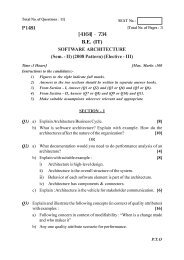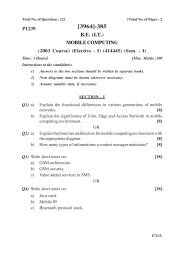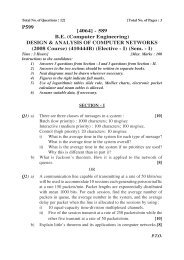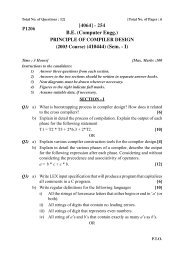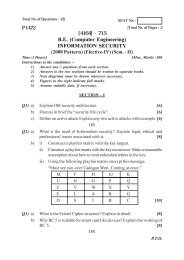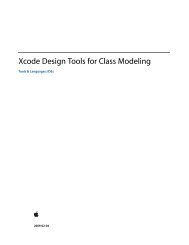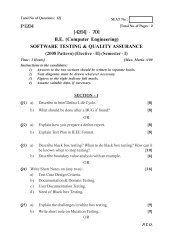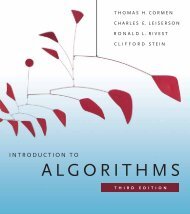Cloud Computing and SOA Convergence in Your Enterprise: A Step ...
Cloud Computing and SOA Convergence in Your Enterprise: A Step ...
Cloud Computing and SOA Convergence in Your Enterprise: A Step ...
You also want an ePaper? Increase the reach of your titles
YUMPU automatically turns print PDFs into web optimized ePapers that Google loves.
What’s New <strong>in</strong> the <strong>Cloud</strong>s 27<br />
accepts that it is okay to place bus<strong>in</strong>ess processes outside of the firewall (see<br />
Figure 2.3). It is not a replacement for <strong>SOA</strong> or traditional enterprise architecture,<br />
but it is an approach to architecture <strong>in</strong> which there is a core acceptance<br />
that Internet-based resources may provide the fastest delivery, the largest number<br />
of resources, <strong>and</strong> a m<strong>in</strong>imum cost.<br />
The general notion is that cloud comput<strong>in</strong>g provides another location for<br />
core bus<strong>in</strong>ess processes us<strong>in</strong>g outsourced <strong>in</strong>frastructure <strong>and</strong> reusable bus<strong>in</strong>ess<br />
processes that are accessible on dem<strong>and</strong>. These Internet-borne systems <strong>and</strong><br />
architectures <strong>in</strong> many cases provide better development speed, access to<br />
prebuilt resources, <strong>and</strong> much more value when compared to traditional<br />
enterprise approaches. These are the reasons <strong>SOA</strong> proves itself on the platform<br />
of the Web more so than with<strong>in</strong> the enterprise these days: It is faster <strong>and</strong> easier,<br />
<strong>and</strong> it provides more <strong>in</strong>itial return on <strong>in</strong>vestment.<br />
The adoption of “Internet-borne <strong>SOA</strong>,” or the notion of extend<strong>in</strong>g your<br />
<strong>SOA</strong> to cloud providers, is f<strong>in</strong>d<strong>in</strong>g quick acceptance. Most <strong>SOA</strong> patterns exist<br />
outside of enterprises on the platform of the Web while architects still struggle<br />
with <strong>SOA</strong> with<strong>in</strong> the enterprise.<br />
Composite applications are be<strong>in</strong>g built with emerg<strong>in</strong>g on-dem<strong>and</strong> tools.<br />
Those applications will need <strong>in</strong>formation, services, <strong>and</strong> APIs, also delivered on<br />
dem<strong>and</strong> over the Internet. <strong>Enterprise</strong>s will seek to externalize exist<strong>in</strong>g<br />
enterprise data to the cloud as well, <strong>and</strong> thus user management <strong>and</strong> security<br />
will rema<strong>in</strong> core issues. In just a few years, we could see many enterprises with<br />
more bus<strong>in</strong>ess processes runn<strong>in</strong>g outside of the firewall than with<strong>in</strong>—if we can<br />
get enterprise architects to read this book.<br />
<strong>SOA</strong><br />
Shared Services<br />
Shared Information<br />
Shared Processes<br />
Agility<br />
Integration<br />
Governance<br />
<strong>Cloud</strong> <strong>Comput<strong>in</strong>g</strong><br />
Services on Dem<strong>and</strong><br />
Database on Dem<strong>and</strong><br />
Applications on Dem<strong>and</strong><br />
Platform on Dem<strong>and</strong><br />
Figure 2.3<br />
Where the cloud meets <strong>SOA</strong>.



